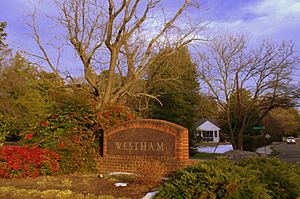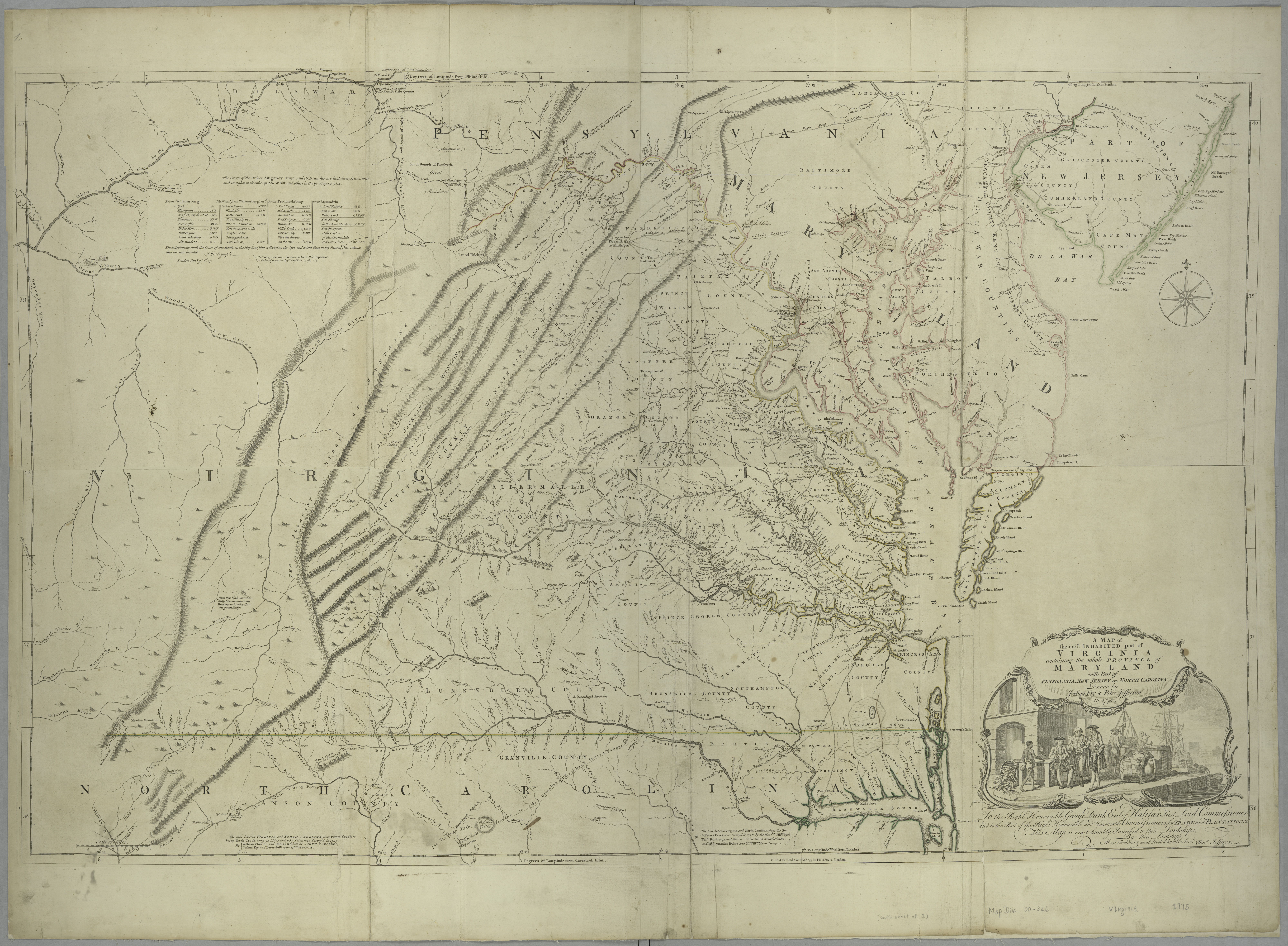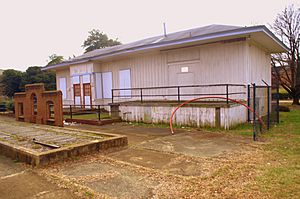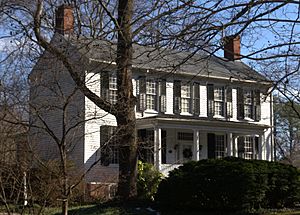Westham, Virginia facts for kids
Quick facts for kids
Westham, Virginia
|
|
|---|---|

Westham sign of neighborhood still called Westham built on the old town in 1930.
|
|
| Country | United States |
| State | Virginia |
| County | Henrico |
| Established | c. 1750 |
Westham was once a small town in Henrico County, Virginia. Today, the area is part of Tuckahoe, Virginia. Westham was built in a special spot on the James River. This spot was important because the river flows freely for hundreds of miles from the west, but then it hits a rocky area called the Fall Line. These rocks stopped boats from going any further up the river.
Richmond, Virginia was built on the other side of this Fall Line, where the river is deep enough for ships to reach the ocean. This made Westham the perfect place for goods, like iron, to be unloaded from smaller boats and then moved to Richmond. Iron from Westham was very important during the American Revolutionary War. Later, Canals and then railroads helped connect Westham to Richmond, making trade easier. Over time, Westham became part of Richmond.
Contents
History of Westham
Westham was founded on land that used to belong to William Randolph II. When he passed away, his son Beverley inherited the land. Beverley wanted to build a town called Westham on part of his property. He hoped this new town would help with trade in the Piedmont region of Virginia, which is an area of rolling hills.
Founding the Town
After Beverley's sudden death, his brother Peter Randolph took over the project. Peter finished building the town and named it "Beverley" to honor his older brother. He got help from important people like William Cabell and Peter Jefferson. Peter Jefferson was the father of future President Thomas Jefferson. Many important Virginians bought land in the new town, including Carter Braxton and Joshua Fry. Peter Randolph later sold the land to his younger brother, William, who then sold it to William Byrd III.
Westham and the Revolutionary War
During the American Revolutionary War, Westham played a key role in supplying iron. A merchant named David Ross bought an iron works and sent iron down the James River on flat-bottom boats to a public foundry in Westham. A foundry is a place where metal is melted and shaped.
Workers at the Foundry
The Virginia government decided that people who were enslaved would work at this foundry. They would only hire blacksmiths if there weren't enough enslaved workers available. As a supplier for the Revolutionary troops, David Ross had to quickly move all the supplies out of Westham. This happened just before British soldiers raided Richmond and Westham. Governor Thomas Jefferson wanted the foundry rebuilt, but eventually, the supplies were moved to another location called the Point of Fork Arsenal.
Kanawha Canal's Start
In 1790, the Kanawha Canal began in Westham. This canal was a big deal because Westham was at the eastern end of over 200 miles of calm water on the James River. Boats called bateaux used this calm water for trade.
Bypassing the Falls
The canal helped boats get around the "Great Falls" of the James River in Richmond. Boats coming from the west would enter a 200-foot-long canal with three special sections called locks. These locks lowered the boats 34 feet, allowing them to pass the first set of falls. After about a mile and a half of river travel, boats could enter the second part of the canal, which led to Shockoe Bottom in Richmond.
Westham Plank Road
| Industry | Roads |
|---|---|
| Founded | March 29th, 1851 in Richmond, Virginia, United States |
| Founders | Bernard Peyton, Bolling W.Haxall of the Bolling Haxall House, Poitiaux Robinson, Larkin W. Glazebrook and William W. Crump |
| Headquarters | , |
|
Areas served
|
Richmond, Virginia, Westham, Virginia |
| Products | Westham Plank Road |
| Owners | James C. Spots, David W. Haxall, Alexander C. Hutcheson and Thomas Ritchie, Jr. |
In 1851, the Virginia government allowed a company called the Westham Plank Road Company to build a special road. This road, made of planks of wood, connected Westham to Richmond.
Connecting Trade Routes
This new road helped connect the riverboats arriving at Westham with the larger ships in Richmond that could travel to the ocean. It also linked to the Three Chopt Road, which crossed the Blue Ridge Mountains at Afton, Virginia. This meant goods could travel from the mountains, down the river, and then by road to Richmond. Today, this old plank road is where Cary Street is located in Carytown, Richmond, Virginia.
Westham Station
Westham Station was built in the 1880s for the Richmond and Allegheny Railroad. This railroad track was laid right next to the James River and Kanawha Canal's old towpath. A towpath was a path next to a canal where horses or people would pull boats.
Railroad and Bridge
In the 1890s, the Richmond and Allegheny Railroad was bought by the Chesapeake and Ohio Railway. Near the station, the Westham Bridge was built across the James River in 1911.
The historic Westham Station building was moved to a city park in Richmond in 1961. This helped save the old building.
Westham Today
Today, a neighborhood built in the 1930s on the site of the old town is still called Westham. The only building in the area that is older than the 1930s was built around 1827. It stands just outside where the original town used to be.




